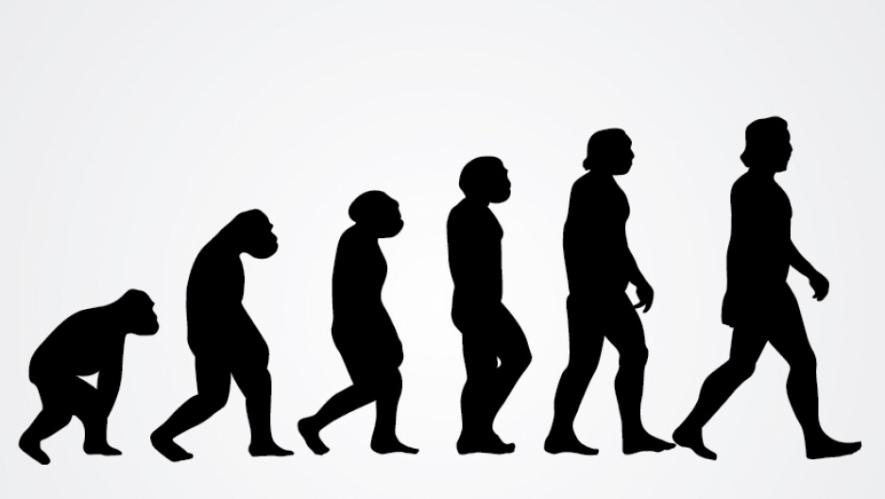‘Cooperation’ as a Crucial Factor in Human Language Evolution

What makes humans unique among all the other members in the animal kingdom? Probably, the two most significant traits that humans have been conferred with were the ability to use hands to make tools and weapons, and the lingual ability for superior communication. Of course, the underlying cognitive, anatomical, physiological advancements were also extremely significant. The most important factor, however, in giving humans the evolutionary edge in its advancement as unique, has been argued to be the increasing cooperation. As far as the evolution of language is concerned, cooperation in humans, which scientists now term as ‘self-domestication’, played many important roles. The positive selective pressure induced by the emerging cooperation turned out to be immensely important in reducing the common environmental selective pressures like predation, foraging etc. Tolerance to social stress reflected in individuals’ behaviour, replacing of aggressiveness by cooperative attitudes, selecting mates having greater pro-social behavior would have been granted selective advantages, and many of the uniquely human traits like the language would have selectively emerged out of the evolutionary pressures.
The hypothesis that well-structured language is a byproduct of self-domestication, cooperation and the accompanying genetic and physiological changes is gaining momentum in recent times. In the biannual conference on language evolution, ‘Evolang’, linguists, psychologists, neuroscientists have been trying to find some solutions of the mysteries of language, and they are strongly putting forward the hypothesis of self-domestication and cooperation as the root of language development. The thrust hovers over finding correlations in other species, including primates that have undergone domestication and the development of lingual capacity among them. One classic case is the differences in singing capabilities between Bengalese finch (society finch) and its wild variety white-rumped munia. The Bengalese finch, domesticated one, can warble soothing notes, even to the amusement of a musician. Whereas, the wild variety, white-rumped munia can only sing short tones and often they are off kilter. The Bengalese finch can learn complex notes responding to the signals of the tutor (human). This vocal learning capacity is absent in the wild munia. Kazuo Okanoya, the ornithologist from Japan, currently conducting his research in the Riken Centre for Brain Sciences, argued that the self-domestication process and the consequent physiological, anatomical and genetic changes bestow the Bengalese finch with their ability of vocal learners and singing complex structured songs. Domestication provides the finch a relatively stress-free environment, which makes them learn singing complex songs. The stress-free environment also reduced the amount of corticosterone, the stress hormone that boosts aggressiveness. Corticosterone also inhibits the growth of neurons involved in song-learning. The reduced level of corticosterone in the Bengalese finch in comparison to its wild relative is a reason for the enhanced capacity of singing of the finch. Apart from birds, not-very-distant from humans, the bonobos have also been researched to test the self-domestication and lingual capability hypothesis.
If the reduction in aggression in domesticated environment and the resulting capability of singing can be correlated in the case of Bengalese finch, then self-domestication in humans should also be correlated to the language evolution. The self-domestication process provided humans a stress-free environment, lesser aggressiveness and a greater lingual capacity. Simon Kirby and James Thomas, in their recent paper,argue that the basis for language development in humans may be laid by a somewhat mellow environment, as in domestication.
The research team led by University of Barcelona neuroscientist Constantina Theofanopoulou looked into the probable genetic changes as a consequence of domestication. To mention the importance of their findings is the evolution of some crucial genes involved in brain plasticity, development of nervous system in a comparison between domesticated and wild pair.
Even though the hypothesis of self-domestication-led-language-evolution is getting increasing importance, more evidences are yet to come to the fore. Hinting towards the hypothesis as a theorising paradigm is yet to be concluded. Nevertheless, the fact that emergence of cooperation in early humans played a crucial role in the evolutionary process of the species holds very much true.
Get the latest reports & analysis with people's perspective on Protests, movements & deep analytical videos, discussions of the current affairs in your Telegram app. Subscribe to NewsClick's Telegram channel & get Real-Time updates on stories, as they get published on our website.














